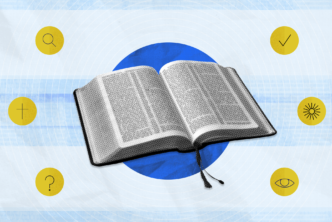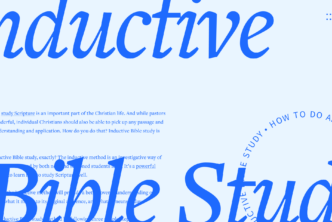I spent a significant portion of my twenties reading productivity blogs, especially those recommending the latest cool apps that promised to make my work umpteen-percent better/faster/easier. Until I realized one day that the time I was spending trying out apps was far more time than I could claim to have saved by using these apps.
I still love clever apps, but I made a choice to seek new ones only when I can verily, verily say unto you that I need them. My workflows have been pretty stable for a long time, and I’m happy with them. Permit me to share with you two tips for the Logos desktop app (download it here) that consistently make my life better/faster/easier.
Each tip is gluten-free.
1. Learn the major keyboard shortcuts
Keyboard shortcuts aren’t for geeks anymore. We are sharing them with the rest of humankind. Take just a few minutes to learn the following keystroke combinations and you will thank me till geeks rule the world, converting even jocks to our ways (hey: I was a football quarterback in junior high—I know whereof I speak). I’m going to give you just three here—and one in the next tip.
⌘L (Win: Ctrl-L)
This keyboard shortcut opens up your library. Try it. No, like now. It ought to become second nature to you. And it’s easy to remember: “L” stands for “Library.” Or “Looking up books.” Or whatever mnemonic connection helps you. Maybe “Learning”—or “Llamas,” because in the Andes mountains they are always looking up (?).
⌘G (Win: Ctrl-G)
In Logos I am constantly looking at different Bible texts. For me that’s a suite of major evangelical English Bible translations (ESV, CSB, NIV, NASB, etc.); it’s also a number of specific editions of the Hebrew Old Testament and Greek New Testament (NA28, SBLGNT, LHB, Scrivener’s TR, etc.). And I’m also all the time moving from one Bible passage to another. You can do this with the mouse, but we geeks spit when we hear the word “mouse.” If my active tab is a Bible of any kind—or any kind of book structured by Bible passage, like a commentary, I hit ⌘G (Win: Ctrl-G) to move the active focus of the cursor up to the reference box. There I type in the reference like so: “John 3 16.” (Geeks also disdain to type in colons when we don’t have to, but we do not spit on them.)
Y (or O or P, etc.)
I love highlighting interesting stuff in Logos, and on the iPad or phone that’s as simple as dragging over the text with my finger. But on the desktop app, I have assigned specific letters to specific highlighter colors. And this matters to me, because different colors mean different things. I don’t get crazy geeky; I mainly use three colors: yellow, orange, and pink. Yellow (Y) for statements I found insightful or useful; orange (O) for the same thing—but used to distinguish two quotes that are right next to each other; pink (P) for ordinals like “First, I’m going to exegete this verse backwards…,” and “Second, I’d like to argue against my mother’s interpretation of this passage…” Like llamas in the Andes, I simply find it helpful to look at the map of where a writer is. It’s super easy to assign certain keys to certain highlighter styles. Just open the highlighter palette and click the little arrow to the right of whatever highlighter style you want to assign a key to.
The point here is to become an efficient reader who can whip around in your library and use the texts you’ve taken the trouble to amass. And also to prove your mother’s interpretations wrong.
2. Use every kind of search Logos provides, especially the simplest.
There is a time to sit down and read a book all the way through. For me, that’s between 10:15 and 11:00 pm while my wife sleeps. At most other times, I tend to have to use books rather than read books. I’m writing while reading; I’m researching some narrow thing; I’m dipping in here and there. I see my Logos library mainly as reference material. So I am constantly searching text in all the ways Logos makes available. Every one of them makes a difference to my productivity.
Once I was listening to a sermon by an anonymous preacher. Uh-oh. You know when a writer must anonymize that the individual in question did something bad. But he only sort of did. He took a common interpretation of a phrase in Ephesians 4 that has always struck me as what biblical scholars call “too cute by half.” This phrase comes at the end of Eph 4:11, a passage discussing gifts the ascended Christ has given to his body, the church:
You’ll see the interpretation of which I was skeptical in the footnotes of some Bibles: “Or, shepherd-teachers.” In other words, there are either five gifts or four enumerated in Eph 4:11. Shepherds and teachers might actually be one office. John MacArthur, who has previously graced the cover of Bible Study Magazine, is called “Pastor-teacher John MacArthur.” I at first accepted this view, but as my gut-level understanding of language and interpretation grew, this interpretation started to sound forced.
Ever since we were dating, my wife has rightly objected to me fiddling on my various devices during church, giving the impression—first to my potential father-in-law, now to our three progeny—that I am not listening. So I had to be quick in Logos, but I equally had to know, and I couldn’t wait till we got home: what do the best Greek grammarians and Ephesians commentators think of the “shepherd-teacher” idea?
The quickest way to find this out is to open a particular Ephesians commentary in the Logos desktop app (⌘L), navigate to Eph 4 (⌘G), and then search for a unique-ish word in the relevant biblical phrase (⌘F). Search for “shepherd” in S.M. Baugh’s highly regarded Evangelical Exegetical Commentary volume on Ephesians (this is the one I searched during the sermon) and you’ll quickly find the place where Baugh discusses—and, kind of, eviscerates—the common argument that “shepherds and teachers” is one gift, the “shepherd-teacher.”
Now: this interpretation is still held by people for whose exegetical skill I have real respect, not least Dr. MacArthur. And I enjoyed and profited from the anonymous preacher’s sermon. And we’re not talking about a major difference here between the two leading interpretations. And top Ephesians commentator S. M. Baugh and I could be wrong. But no major English translation clearly takes the shepherd-teacher view, so to preach or teach it means telling people that the Bibles in their laps are at least a little bit wrong. And you’d better have a very good reason to do that.
But do try my two tips. Your exegesis will improve by umpteen percent.
***
This article originally appeared in the May/June 2022 issue of Bible Study Magazine.
Here’s one more tip for those newer to Logos: Logos packages combine curated libraries with powerful features, meaning your searches bring you back more insights you’ll want to highlight. Take a look at your options to see which best fits you right now. You can always start small and grow over time! With something called Dynamic Pricing, you’ll never pay twice for what you already own.







